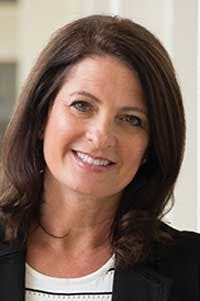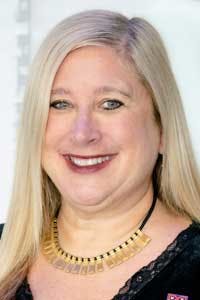At a Glance:
- An ally is a person who actively and intentionally seeks to bring about change by fostering inclusion, social justice and human rights.
- Panelists, Chandra Brown, CEO, MxD, and Jackie Mattox, president & CEO, Women in Electronics, shared perspectives gleaned from the collective knowledge they harness in leading their respective organizations.
- True allyship works to uplift others to combat systemic issues. This requires follow-through. Words without action can be perceived as disingenuous and performative.
Machine Design and Electronic Design hosted a WISE (Women in Science and Engineering) virtual panel to round out a year-long series of video chats on women’s participation across STEM fields. This session centered on the subject of allyship and the role of women-led organizations in elevating diversity across STEM disciplines.
Panelists Chandra Brown, CEO, MxD, and Jackie Mattox, president & CEO, Women in Electronics, each shared perspectives gleaned from the collective knowledge they harness in leading their respective organizations.
In this three-part Q&A that has been edited for length and clarity, Brown and Mattox agree that allyship can be an important tool in promoting equity and in supporting underrepresented groups. But to do so effectively, they argued, organizations, institutions and their senior members need to look inward to figure out the work that needs to be done.
Part 3: Creating a Strategy
Rehana Begg: It is sometimes difficult for individuals to reach out to others or to trust people and to speak honestly about the barriers they face. How can leaders create a more inclusive environment that promotes equity and inclusion? What needs to shift? What needs to change in order to have trust?
Jackie Mattox: Well, first of all, I have to say one of the ways for us is our mentorship program. It’s amazing how many organizations have mentorship programs but it’s not considered a safe space. People don’t want to complain about somebody at the company. That’s why providing this industry-wide program is great because they can connect with somebody outside of their organization, yet still in the industry, who provides a very safe space.
Women in Electronics, for instance, is an organization for women, but we invite in men. We want you to hear [from them], we want them to participate, be at the table. Allowing the groups to align and define that sense of connection, which creates a very safe space.
Chandra Brown: I love that things are being formed internally. And with respect to safe spaces, when it comes back to the leadership comment that we’ve been talking about, you have to have the leadership that is trusted and is going to do that. One of the issues is, gosh, it’s a digital revolution—Industry 4.0—that is changing all the time and so quickly.
But in reality, none of us are experts. There are so many people smarter than I am in every topic that we touch on. Showing that vulnerability to let people know, even from a leadership standpoint, that we are not the best at everything, we are not experts in everything. Especially when you talk about data and the speed of change, anyone who claims that is incorrect. I would argue, from a leadership standpoint, you have to create an overarching climate.
We do a lot of projects. MxD, for example—we’ve invested over $120 million, 85 projects. We’re investing a lot of money across all sorts of topics: supply chain, cybersecurity topics. The reality is not every one of these projects are successful. My entire team will see failure. You’re a manufacturer, things are going to fail. Things are going to fail on the floor. That’s what’s going to happen. There is no other way.
And I personally think that helps to contribute to a climate of allyship and a climate of support and mentorship. Because failure is a very expectable option, and you can’t say that all the time at places. From a leadership perspective, that’s another factor in how you can do things to help benefit the whole.
RB: What would be a takeaway idea or a strategy that I can leave our conversation with today and apply in my own world, in my own environment, and to try and help change direction in a positive way. What should I do?
CB: There are so many things you can do, from the specifics, to the grandiose. You heard some of my simple metrics on how that can be helpful. But it starts first with you. I’m about data, and to fix problems you have first understand them. The first thing is really serving yourself, given your level of comfort. What is it that you’re doing and [consider] the people around you if you’re going to become this incredible ally. First, you need to understand what is your knowledge of [allyship]. Is it wanted and is it needed? How can you be helpful and how comfortable are you with doing that work?
There are lots of resources out there, too. There are such incredible books. Read from the source; read from the underrepresented—not from the other side. That’s another basic way of being an ally. Support and uplift the work that’s already being done and invest in that training. Ask: what is the self-training? What’s the work that needs to be done? This is lifelong; there’s no silver bullet. Be prepared to be uncomfortable, prepared to be humble. Take the small steps and do the little things.
That’s what I love telling people even when it’s digital transformation—you have to start walking on the path. Mistakes will most likely be made. But start small, start doing something that you know you’re comfortable with and will impact the lives of the people that are in your circle before you even have to go farther. That’s what I would give as my very practical advice and a simple strategy for a change and you becoming the agent of change—or even for those of us that have been good allies.
There are so many more things I could do better. This is not a one and done. This is going to take iteration after iteration. I continue to learn. I hope I get better…
JM: That personal development; the best thing you could do is start with where you are. Start with yourself first and get educated. Even me, leading Women in Electronics for all these years, I catch myself. What are my own unconscious biases? What is my emotional intelligence? Why am I getting triggered by this or that? Start with yourself. And then start with your sphere of influence. Where is it that you could reach out to somebody and bring them up?
I also think that it’s really critical for companies to start implementing [strategies]. As we’re asking for more diverse cultures, we’re going to get people who think differently than us. So, people have to get used to and be okay with being uncomfortable, but also disagree. Not everyone’s going to have the same opinion, and I think in a lot of companies—if you look at the culture, say in male-dominated industries—everybody’s thinking alike, so they agree more.
Well, now we’re creating these cultures where we’re having more inclusion, so we have to be prepared for and ready to have those conversations about what conflict looks like. How do we move forward when we’re not aligned? How do we disagree very respectfully and still move forward? So, I very much advocate for those types of conversations.
The other thing I’ll have to say is, we’re asking for diverse talent to come into organizations, but are we looking at whether the organization is set up for that? Looking at the middle management in particular, do we have diverse-minded, inclusive-minded managers that are allowing the progression? So, we’re wanting to get talent in, but are we actually promoting them? Are they getting stopped? When we’re hiring people, are we looking at emotional intelligence?
If there’s anybody who has any influence over a talent, start looking at that. Start looking at emotional intelligence in your hiring but also in your existing talent. What does that look like and where are the blocks?
Click here to register for the Engineering Change Through Allyship webinar with Chandra Brown and Jackie Mattox, to be held Nov. 30th.
Editor’s Note: Machine Design's Women in Science and Engineering (WISE) hub compiles our coverage of gender representation issues affecting the engineering field, in addition to contributions from equity seeking groups and subject matter experts within various subdisciplines. Click here for more.
About the Author

Rehana Begg
Editor-in-Chief, Machine Design
As Machine Design’s content lead, Rehana Begg is tasked with elevating the voice of the design and multi-disciplinary engineer in the face of digital transformation and engineering innovation. Begg has more than 24 years of editorial experience and has spent the past decade in the trenches of industrial manufacturing, focusing on new technologies, manufacturing innovation and business. Her B2B career has taken her from corporate boardrooms to plant floors and underground mining stopes, covering everything from automation & IIoT, robotics, mechanical design and additive manufacturing to plant operations, maintenance, reliability and continuous improvement. Begg holds an MBA, a Master of Journalism degree, and a BA (Hons.) in Political Science. She is committed to lifelong learning and feeds her passion for innovation in publishing, transparent science and clear communication by attending relevant conferences and seminars/workshops.
Follow Rehana Begg via the following social media handles:
X: @rehanabegg
LinkedIn: @rehanabegg and @MachineDesign



